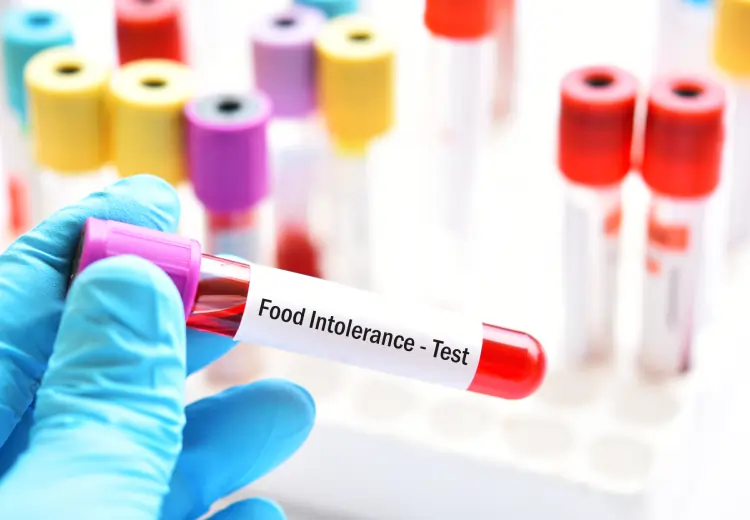Food Intolerance Test

What is Food Allergy & Food Intolerance Tests?
Food Allergy = Immune System reaction to the food. Food Intolerance = Other reactions to the food.Difference between Food Allergy & Food Intolerence:
Food allergy and food intolerance are types of ‘food sensitivity’ and both can make you feel unwell. If you have a food allergy this means your immune system reacts to a particular food. This causes symptoms within two hours, such as itchiness, rash and swelling. Sometimes this reaction can be so severe that it can cause a life threatening reaction known as anaphylaxis. Food intolerance, however, doesn’t involve the immune system. Food intolerance is an adverse reaction to a particular food. The symptoms can be unpleasant and in some cases severe but are generally not life-threatening.Food Allergies
Having a food allergy means you experience an abnormal immune reaction to a particular food protein that is harmless for most people. This is because antibodies are produced in your body against the protein in a food (the allergen) so that when you eat the food, histamine and other defensive chemicals are released into your system causing inflammation. It is these chemicals that trigger reactions that can affect your respiratory system, gastrointestinal tract, skin or cardiovascular system.What Are The Symptoms Of Food Allergy?
Mild To Moderate
- Swelling of lips, face, eyes
- Hives or welts
- Tingling mouth, abdominal pain,Vomiting
Severe
- Difficulty or noisy breathing
- Swelling of tongue
- Swelling or tightness in throat
- Difficulty talking or hoarse voice
- Wheeze or persistent cough
- Loss of consciousness or collapse
- Pale and floppy (young children)
If someone has a severe food allergy, this can cause a life-threatening reaction called anaphylaxis. Anaphylactic attacks are commonly characterized by symptoms such as swelling of the tongue and throat, difficulty breathing, wheezing and loss of consciousness. People at risk of anaphylaxis should always carry an adrenaline auto-injector for emergency use.
What Are The Common Food Allergens?
The eight most common food allergens are:- Crustaceans
- Eggs
- Fish
- Milk
- Peanuts
- Soybeans
- Tree nuts (eg cashews, almonds, walnuts)
- Sesame seeds
Food Intolerance
Having a food intolerance means you will experience an adverse reaction to certain food components but this does not involve the immune system. In fact, it is quite different from a food allergy.What Are The Symptoms Of Food Intolerance?
- Stomach and bowel upsets
- Bloating
- Headaches and migraines
- Wheezing and a runny nose
- Hives
- Generally feeling under the weather
